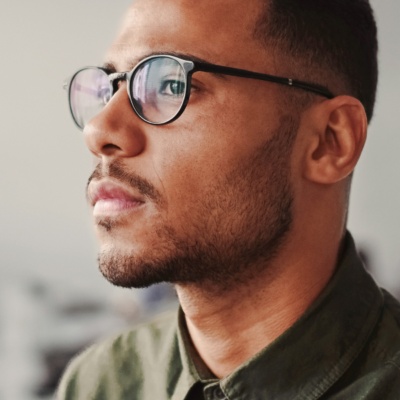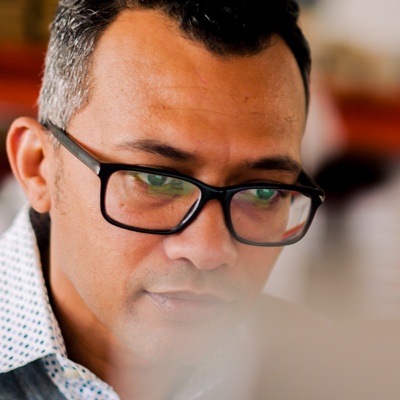3 Ways Ralph Lauren Accelerates Procurement
The global sourcing leader at Ralph Lauren shared insights and best practices for driving high-performing procurement at our Conversations for a Changing World digital event.

The global sourcing leader at Ralph Lauren shared insights and best practices for driving high-performing procurement at our Conversations for a Changing World digital event.

As a leading luxury brand, Ralph Lauren is on a mission to inspire its customers to dream of a better life through authenticity and timeless style. Supporting upward of $6 billion in revenue, the procurement team at Ralph Lauren is responsible for ensuring that the company’s multiple brands are consistently represented across more than 600 locations. To keep up with high demand, the team must have complete visibility into its suppliers, contracts, and in-progress requests.
Ralph Lauren global procurement leader Juan Ahmad joined us at Conversations for a Changing World and shared his insights on driving a world-class procurement organization for the Fortune 500 company.
“If there’s ever a time to be in procurement, it’s now.”
 Juan Ahmad
Senior Director, Strategic Sourcing
Ralph Lauren
Juan Ahmad
Senior Director, Strategic Sourcing
Ralph Lauren
Managing over $1 billion in indirect spend, Ahmad and his team provide strategic decision-making support across marketing, IT, HR, and more. Getting that proverbial seat at the table, however, didn’t happen overnight. The team spent nearly four years laying the groundwork for procurement transformation—an effort that paid dividends during the first volatile months of the pandemic.
According to a recent chief procurement officer (CPO) survey by Deloitte, the office of procurement is undergoing widespread transformation. Catalyzed by supply chain and labor disruptions, CPOs are reevaluating their priorities in an effort to elevate the office of procurement. Deloitte reports that 78% of CPOs surveyed stated driving operational efficiency is a top priority, while 82% of respondents are spending up to 20% of their time mitigating risk and ensuring compliance. Most interesting, however, is that when it comes to high-performing procurement organizations, 70% are more likely to be involved in strategic decision making than their non-high-performing counterparts.
For procurement at Ralph Lauren, becoming a high-performing sourcing organization meant empowering the team with technology so it could achieve more impact with fewer resources. At Conversations for a Changing World, Ahmad shared his top three best practices for adding value to the business.
Like many retailers, Ralph Lauren grappled with supply shortages, disrupted value chains, and widespread store closures in compliance with local legislation amid the pandemic. With more consumers withdrawing indoors, spending in 2020 dipped drastically. This strained budgets and challenged the team to come up with creative solutions to continue delivering on key objectives despite the disruption. In his session, Ahmad advised procurement leaders to align their goals tightly with business strategy to secure buy-in and set sourcing up for success.
To streamline processes, Ahmad invested in technology that automated manual tasks like data entry and reporting, winning time back for his team to work on more strategic initiatives like business continuity planning and cost savings. Another key objective was to manage spend more proactively by gaining a holistic view into contractual obligations and upcoming renewals. Lastly, Ahmad made sure to keep in lockstep with his team by centralizing collaboration onto a single system of record.
“One of the most important aspects of our transformation, not only as a company but as a procurement team, has been leading with digital.”
Risk management has played an increasingly important role in strategic enterprise planning. A recent study, “Managing Procurement Risk,” sponsored by Workday and conducted by Harvard Business Review Analytic Services, found that 95% of businesses experienced some kind of supply chain disruption due to the pandemic. Ralph Lauren was no exception. For Ahmad, supply chain stability was a top priority amid labor and materials shortages. Simply managing risk was not enough. Ahmad and his team needed a way to anticipate potential risk and solve for it before it could disrupt operations.
How did he do it? By forging strong partnerships with his strategic suppliers. Long before 2020, Ahmad and his team spent countless hours building relationships with vendors. In the turbulence caused by the pandemic, it was these strong relationships that helped Ahmad steady the ship and keep the business moving forward. To forge these partnerships, Ahmad suggests maintaining an open line of communication with suppliers. Collaborating early and often with partners can help procurement leaders plan proactively for potential disruption.
The role of procurement is undoubtedly evolving, and teams must be ready to step in and act as strategic advisors to the business. For procurement at Ralph Lauren, this change in operating model had to come “both from the bottom up and the top down,” said Ahmad. Partnering closely with stakeholders to prove the value of procurement was a key first step in getting a seat at the table.
“Let your team’s successes speak for themselves. Sometimes you have to start out small in order to establish yourself and build credibility, and then grow from there to tackle more strategic projects.”
It’s also important to be able to articulate the vision, goal, and purpose of procurement to your stakeholders, Ahmad said. Once you’re able to demonstrate the value of your team as well as explain how you can help stakeholders meet their business needs, you can build a strong foundation of trust and grow your strategic partnership.
Interested in learning more about Ralph Lauren’s procurement transformation? View Juan Ahmad’s full session from Conversations for a Changing World.
More Reading

Finance teams are under pressure to plan faster, more often, and with input from every corner of the business. Holistic financial planning and integrated FP&A make that possible by connecting people, data, and decisions in real time.

AI has already led to huge changes in predictive analytics in finance, and the biggest are yet to come. Learn how automation and advanced data analysis are turning finance teams into strategic leaders.

This article defines inventory management and warehouse management, the benefits and challenges of each, and why an integrated solution to managing the entire supply chain is the best approach.